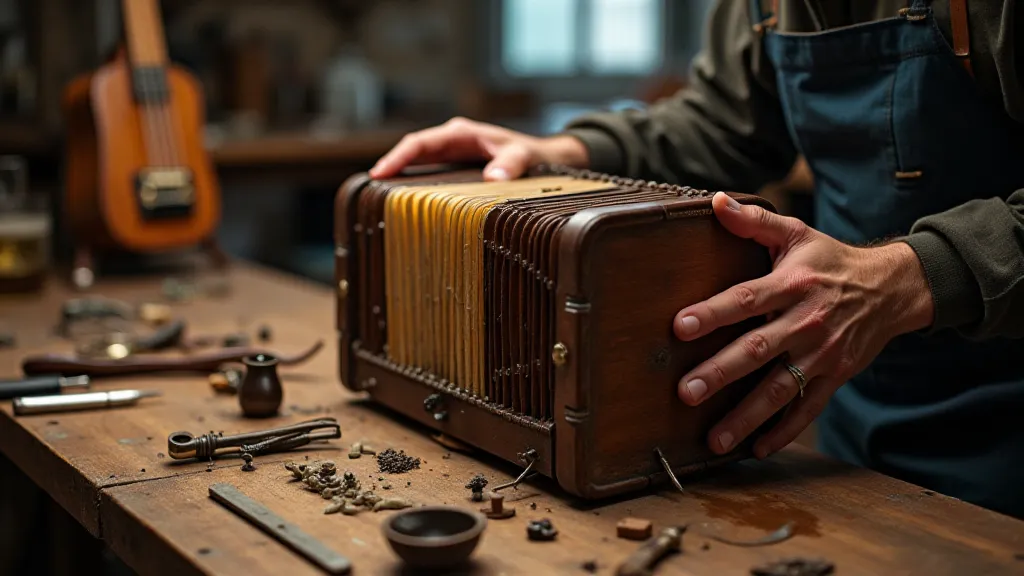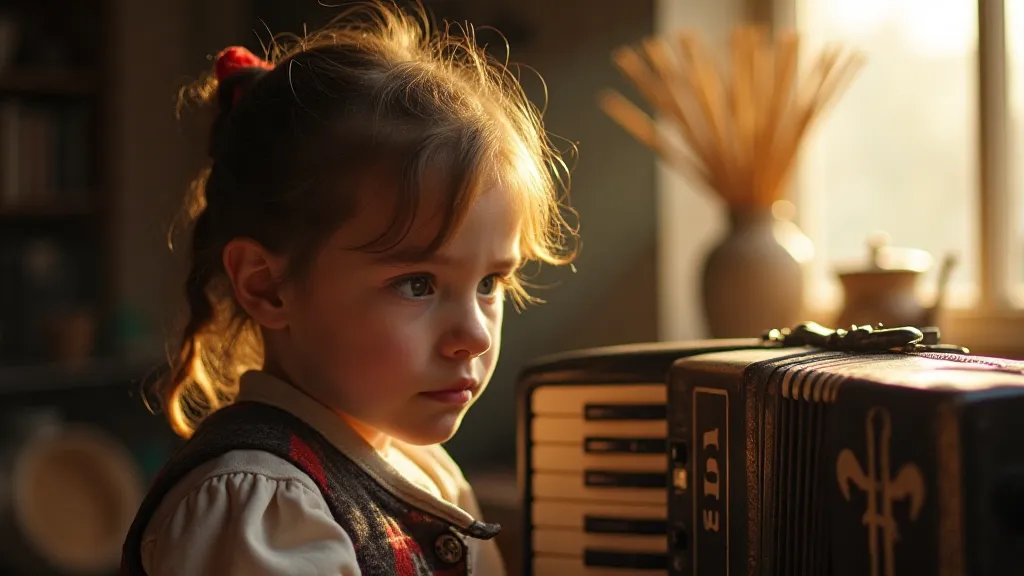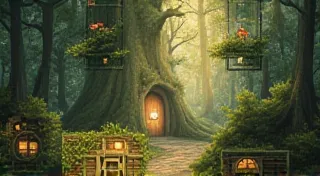The Atlas of Forgotten Worlds: Building Believable Settings
Every story deserves a home. Not just a location, but a place that feels real, steeped in history, and resonant with unspoken narratives. A setting isn’t merely backdrop; it's a character in its own right, influencing the plot, shaping the characters, and ultimately, transporting the reader. But building a truly believable world extends far beyond sketching landscapes and naming cities. It's about uncovering the layers of existence, the echoes of the past, and the emotional truth that makes a place feel alive.
I remember, as a child, discovering my grandfather’s attic. It wasn’t filled with the typical treasures one might expect – no pirate gold, no forgotten toys. Instead, it held a single, battered accordion. Its bellows were cracked, its keys yellowed and chipped, but the craftsmanship was undeniable. It spoke of hands long gone, of music once played, of laughter and tears woven into its very construction. Trying to imagine the person who played it, the stories they told through its melancholic wail, was a powerful exercise in empathy and world-building. This pursuit of understanding, of uncovering the narrative threads woven into an object, mirrors the broader practice of crafting compelling settings.

Beyond the Physical: Weaving in History and Culture
Think of your setting as a palimpsest – a manuscript on which later writing has been superimposed. Layers of history are constantly shaping what exists in the present. To build believability, you need to understand those layers. What wars have been fought on this land? What religions have flourished and faded? What economic forces have shaped its people? The details are key. Sometimes, the most profound understanding comes from deeply researching the archivist's chamber, seeking out the echoes of past civilizations and incorporating them into your world’s foundation.
Don't be afraid to borrow from history, but avoid direct copies. A vaguely Romanesque city isn't a Roman city; it's a place *influenced* by Rome. Consider the ripple effect of historical events. A volcanic eruption might devastate a city, leading to migration, new trade routes, and changes in societal structure. A period of prosperity could lead to architectural innovation and artistic flourishing. The tiniest detail, a forgotten agricultural technique, a lost dialect, can add immeasurable depth and realism.
Culture is the heartbeat of any believable setting. It's not just about customs and traditions; it's about values, beliefs, and the shared experiences that bind people together. What do they fear? What do they celebrate? How do they mourn? These aren't arbitrary choices, but the logical consequence of the environment, history, and the choices made by generations.
The Silent Language of Environment
The environment isn't just a pretty picture; it's a powerful storyteller. A harsh, unforgiving desert will shape its inhabitants differently than a lush, fertile valley. A dense, ancient forest can hold secrets and dangers, fostering a culture of reverence or superstition. Consider the impact of the environment on architecture, clothing, and even language. The most compelling worlds show how the landscape dictates the people, their beliefs and their destinies.
Think about the sounds of your setting. The bustling marketplace, the creaking of ships in a harbor, the mournful cry of a distant animal. The smells are equally important – the fragrant spices of a trading post, the smoky aroma of a blacksmith’s forge, the earthy scent of a damp forest floor. Engage all the senses to create a truly immersive experience. The textures, the tastes, the very air they breathe – all contribute to the world’s palpable reality.
The Art of Restoration: Finding Authenticity in Detail
Restoring an antique object – like my grandfather’s accordion – isn't about making it perfect; it's about revealing its history. It's about appreciating the imperfections that tell a story. Similarly, in worldbuilding, it's the small, seemingly insignificant details that often create the most convincing illusion of reality. It's about understanding that a world isn’t built on grand narratives alone, but in the cumulative effect of countless minor events and choices.
Consider the wear and tear on everyday objects. A farmer’s hands would roughen the handle of his tools. A traveler’s boots would be scuffed and worn from countless miles. These seemingly minor details add a layer of authenticity that elevates your setting from mere description to a living, breathing entity. This process often requires a keen eye for nuance, a sensitivity to the subtle shifts in reality that can be manipulated to create the illusion of profound depth – it's a skill akin to the alchemist's quill, transforming commonplace elements into something extraordinary.

The Collector's Eye: Embracing the Unseen
A collector doesn’t just acquire objects; they uncover stories. They research provenance, examine craftsmanship, and appreciate the history embedded within each item. As a worldbuilder, you need to adopt a similar approach. This isn't merely about cataloging facts; it's about weaving them into a cohesive narrative, understanding the underlying motivations and the complex web of relationships that shape a society.
Go beyond the obvious. What are the myths and legends that shape your world? What are the forgotten rituals that are still practiced in secret? What are the rumors and whispers that circulate among the common people? These are the details that distinguish a cardboard cutout of a world from one that truly feels lived-in.
Don't be afraid to create inconsistencies. The real world is full of contradictions and paradoxes. Trying to create a perfectly logical and consistent world can actually make it feel less believable. A world riddled with ambiguities, with unresolved mysteries, is far more intriguing and ultimately, more realistic.
Emotional Resonance: The Soul of the Setting
Ultimately, a believable setting isn’t about accuracy or consistency; it’s about emotional resonance. It's about creating a place that feels *real* to the reader, even if it doesn't exist in the physical world. The more deeply rooted the setting is in the emotional landscape of the story, the more impactful it will be.
Think about the emotions you want your setting to evoke. Do you want it to feel hopeful and inspiring? Or dark and oppressive? Let those emotions guide your decisions about details and atmosphere. A sense of dread can be amplified by a constant, low-lying fog or a pervasive feeling of being watched, even when there's nothing to see.
My grandfather's accordion, with its cracked bellows and yellowed keys, held a profound emotional weight. It wasn’t just an instrument; it was a tangible link to the past, a vessel for memories and stories. As you build your worlds, strive to imbue them with a similar sense of depth and meaning. Sometimes, the most powerful stories are those where the setting itself becomes a character – a silent observer, a subtle manipulator, a reflection of the characters' inner turmoil.

Furthermore, consider how the perception of a setting can be shaped by individual perspectives. Exploring the subjective realities of those living within your world— the biases, the hopes, the fears— can add layers of complexity and nuance. It’s not enough to simply describe a place; you must consider how it's experienced by those who inhabit it – a concept examined in depth when exploring multiple perspectives in storytelling.
Remember, the best settings aren't just places; they're experiences. They're landscapes of the heart, woven with the threads of history, culture, and emotion. They are, in essence, the silent characters that breathe life into your stories.





